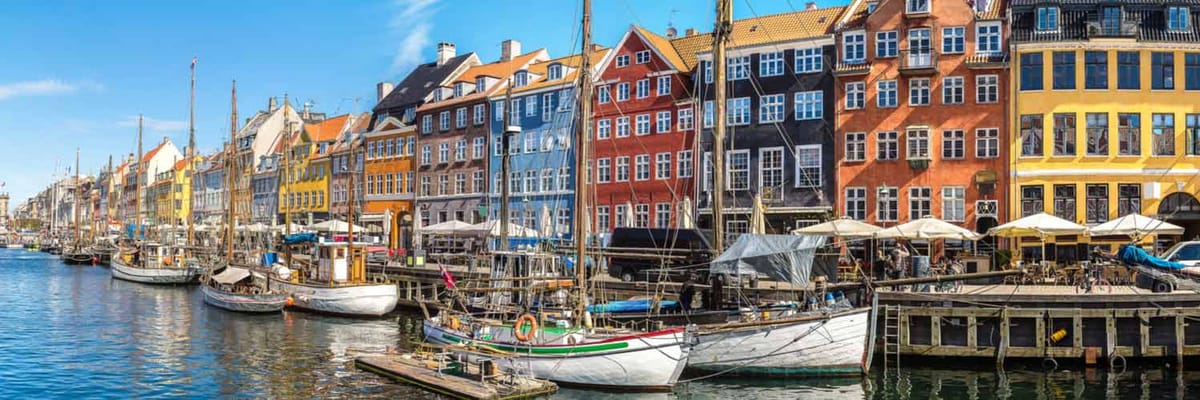
Flights to Copenhagen with Air France
expand_more
1 Passenger, Economy
expand_moretoday
today
*Modifying this information may result in a different fare
Find your flight to Copenhagen
flight_takeoff
flight_land
No fares were found for the selected criteria. Please try again with different City, Date Range and Budget.
No fares were found for the selected criteria. Please try again with different City, Date Range and Budget.*Fares displayed have been collected within the last 48hrs and may no longer be available at time of booking. Additional fees and charges for optional products and services may apply.
Check our flights to Copenhagen for the upcoming months
flight_takeoff
flight_land
No fares were found for the selected criteria. Please try again with different City, Date Range and Budget.
No fares were found for the selected criteria. Please try again with different City, Date Range and Budget.*Fares displayed have been collected within the last 48hrs and may no longer be available at time of booking. Additional fees and charges for optional products and services may apply.

Travel to Copenhagen
Whether you're looking for a last-minute Copenhagen (CPH) flight or planning a flight at a later date, take advantage of our lowest prices for your travel dates on this site. With our flights list you can easily find for the coming months the cheapest prices to fly with Air France to Copenhagen (CPH). You can also directly pick your departure date on our booking engine at the top of the page, if your trip to Copenhagen (CPH) is already scheduled.
Discovering Copenhagen, the capital of Denmark
Located at the gateway to the Baltic sea, Copenhagen is both the capital and the largest city in Denmark. It has a population of about 600,000 people, but about 2 million people live in the greater Copenhagen area.
The city of Copenhagen straddles two islands; the east side of Seeland Island and Amager Island. It is near the border between Denmark and Sweden.
The oldest trace of a dwelling found in Copenhagen dates back to the 8th century A.D. They are the ruins of a house built during the Viking era. After having been given to Bishop Absalon, the city developed greatly. Many religious buildings were built during that period: Notre-Dame Cathedral, the Church of the Holy Spirit, Saint Peter's Church, etc. Copenhagen owes its economic development to the herring trade.
Today, the capital of Denmark is an important economic and financial hub for the Scandinavian countries. Since there is no longer an army and many factories have closed, the economy is largely based on the services sector.
Due to its geographical location in the north of Europe, and its ocean climate, Copenhagen has temperatures that vary between 0 and 20°. However, some summers have had temperatures above 25, even 30°. It is a very pleasant city to visit. The important public transportation network (interurban train, subway, buses, railroad, etc) makes it easy for visitors to discover the city.
All year round, Air France> offers flights to Copenhagen. Reserve your plane tickets and your hotel online to benefit from very good rates!
Visiting Copenhagen, a Scandinavian city between tradition and modernity
The fact that Copenhagen is a modern city that has conserved a traditional look makes it unique. In addition to being built on 2 islands, Copenhagen has a network of canals that run through its centre. The Christianshavn district is well-named, “Little Amsterdam”.
It is pleasant to walk through the capital city. During your visit to Copenhagen, don't hesitate to stroll through the narrow streets in the city centre and explore all of the nooks and crannies on foot or bike. In the centre, there are many bars, restaurants and shops. You can admire the colourful houses that are very typical of Scandinavian architecture.
Your stay in Copenhagen will also be an occasion to visit the many museums and historical buildings in the Danish capital: the Rosenborg Palace, Amalienborg Castle, Round Tower, Grundtvig Church, Frederiksborg Castle, etc. Close by, you can admire the modern buildings imagined by famous designers such as the Elephant House by Norman Foster and Copenhagen's Symphony Hall by Jean Nouvel.
Are you travelling to Denmark with your family? Copenhagen is a very enjoyable destination for parents as well as children. Thanks to the Danish social system, called the Danish way of life, most museums offer activities that are adapted to younger visitors.
We recommend travelling to Copenhagen between the months of June and September. You will enjoy sunny weather and pleasant temperatures.
